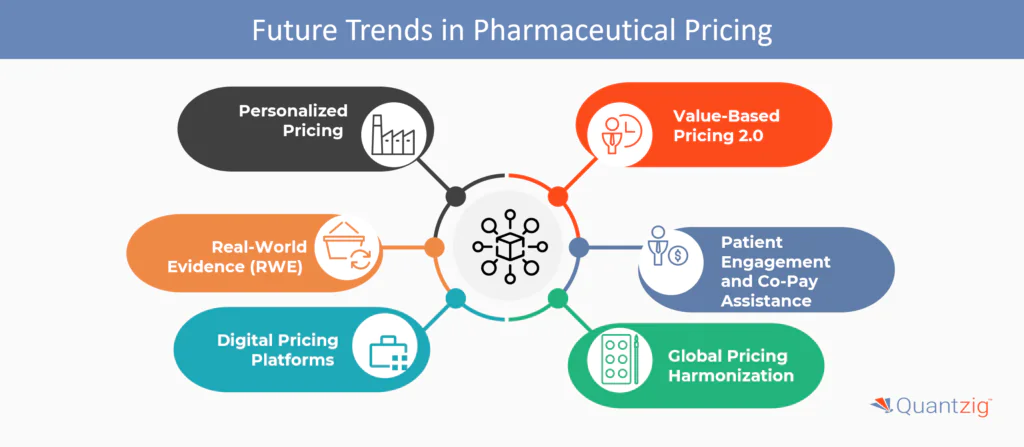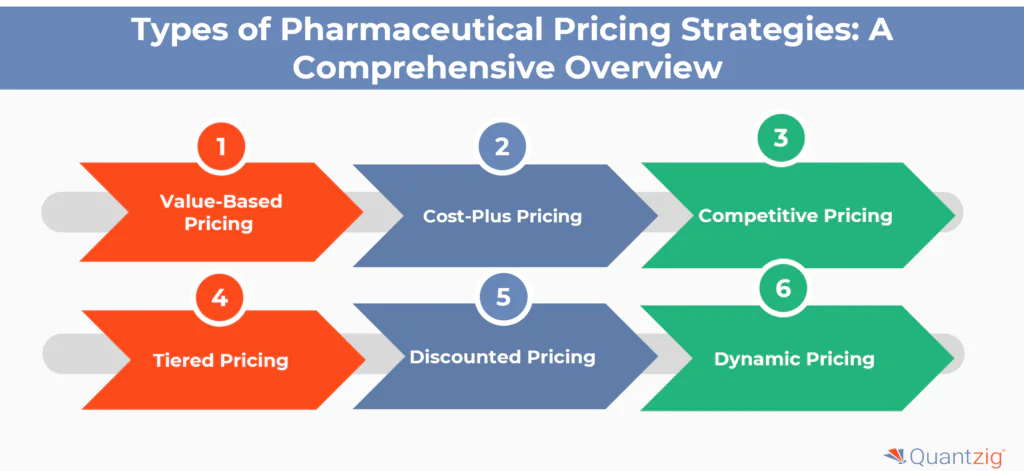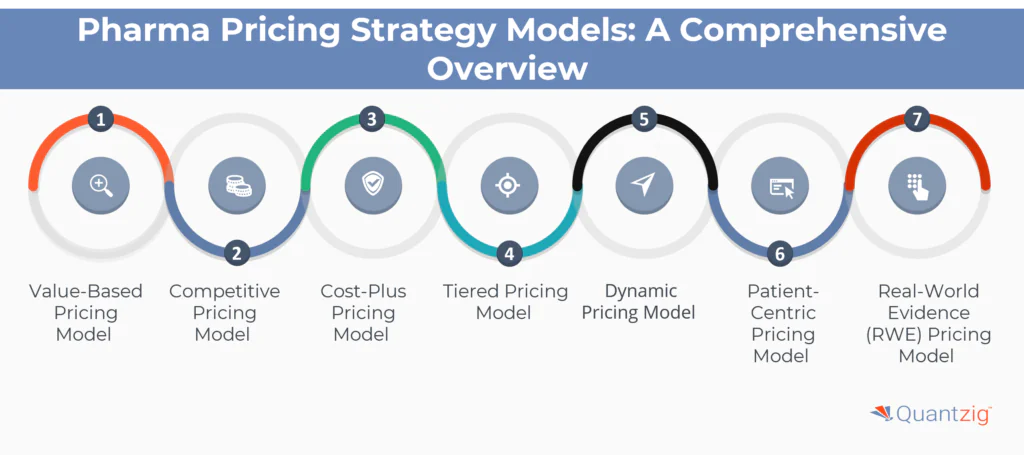Written By: Sudeshna Ghosh
Table of Contents
Introduction to Pharma Pricing Strategy
In an industry marked by intense competition, rapidly evolving regulations, and the constant need to balance innovation with affordability, a well-crafted pricing strategy can be the difference between a thriving business and one that struggles to stay afloat. Pharmaceutical pricing is a complex and multifaceted challenge, requiring a deep understanding of market dynamics, regulatory frameworks, and the unique needs of various stakeholders, including patients, healthcare providers, and payers. A robust pricing strategy not only ensures the financial viability of a pharmaceutical company but also plays a crucial role in ensuring access to life-saving medications and driving continued investment in research and development.
In this article, we will explore the key considerations and best practices that pharmaceutical companies must navigate to develop an effective pricing strategy that aligns with their business objectives and the needs of the broader healthcare ecosystem.
Book a demo to experience the meaningful insights we derive from data through our analytical tools and platform capabilities. Schedule a demo today!
Request a Free DemoQuantzig’s Expertise in Pharma Pricing Strategy for a Leading Pharmaceutical Client
| Category | Details |
|---|---|
| Client Details | A leading pharmaceutical company in the US, renowned for its diverse product portfolio and widespread presence. |
| Challenges Faced by The Client | The client, a leading pharma retailer in Europe, was facing challenges in setting prices for its products due to a lack of a robust pricing strategy and mechanisms to track, monitor, and manage prices across different websites and geographies. |
| Solutions Offered by Quantzig | Quantzig team captured price adjustments from different websites and systems for consolidation and aggregation to perform price optimization on the client’s various products. |
| Impact Delivered | – Shared real-time visibility of product prices, market share, and discounts – Created analytical capability to monitor and benchmark prices across geographies – Benchmarked product prices against competitor offerings – Analyzed online data for 1000+ price points across the client’s business product portfolio |
The Business Challenge of the Pharmaceutical Client
A leading pharma retailer in Europe was facing challenges in setting prices for its products. The client lacked a robust pricing strategy, and mechanisms to track, monitor, and manage the prices across different websites in different geographies. They wanted Quantzig’s pricing analytics assessment team to benchmark prices of existing retail products across various categories – personal care, beauty, household, grocery -against competitor products in the same categories in the market, and identify which products would form the key price benchmarks.
Our Approach
By assessing sales data, customer feedback, product data, pricing data, and social media data, Quantzig’s analytics team analyzed the business problem. The team captured price adjustments from different websites and systems for consolidation and aggregation to perform price optimization on the client’s various products.
Impact Delivered from Quantzig’s Pharma Pricing Strategy
- Shared real-time visibility of product prices, market share, and discounts
- Created analytical capability to monitor and benchmark prices across geographies
- Benchmarked product prices against competitor offerings to gain insights into industry-standard pricing
- Analyzed online data for 1000+ price points across the client’s business product portfolio
Pharma Pricing Analytics Predictive Insights
- Tracked the effect of discounts on sales and the performance trends for top products online
- Analyzed sales sensitivity of each product based on the unit discount
- Developed pricing strategy based on comparable products from different brands online
- Analyzed social chatter about products prices and performance
- Forecasted sales for the client’s products based on current prices
Get started with your complimentary trial today and delve into our platform without any obligations. Explore our wide range of customized, consumption driven analytical solutions services built across the analytical maturity levels.
Start your Free Trial todayWhat is a Pharma Pricing Strategy?
A pharma pricing strategy is a comprehensive approach used by pharmaceutical companies to set the price of their drugs. It involves considering various factors such as the cost of production, research and development, marketing, and competition to determine the optimal price for a drug. Pharmaceutical pricing strategies can be categorized into several models, including cost-plus pricing, value-based pricing, reference pricing, and competition-based pricing. Each model has its own strengths and weaknesses, and pharmaceutical companies must carefully consider these factors to ensure that their pricing strategy is effective and sustainable.
Role of Pricing Analytics in the Pharmaceutical Industry
In the pharmaceutical industry, clinicians, KOLs, payers, and patients play a crucial role in building an effective pricing strategy for new products. The pharma companies need a strong understanding of their customers and current market conditions before setting an optimal launch price. The implementation of the pricing analytics tool offers holistic insights on the product value, competitors, payer strategies, and customers’ willingness to pay.
One of the major challenges that pricing managers in the pharma industry deal with is getting all the internal stakeholders to agree on the pricing strategy. With pricing analytics, this is tackled as the assessment is a robust way of analyzing data. Quantzig’s pricing analytics assessment identifies the value drivers for products in the same segment and understands how it was perceived to recommend the optimal price. It also offers a solution to get a 360-degree view of the client’s sales to optimize price points.
Types of Pharmaceutical Pricing Strategies: A Comprehensive Overview
Pharmaceutical companies employ various pricing strategies to navigate the complex landscape of the healthcare industry. These strategies are designed to balance the need for profitability with the imperative of ensuring access to life-saving medications. In this article, we will delve into six key types of pharmaceutical pricing strategies, highlighting their strengths and weaknesses, and exploring the competitive landscape in which they operate.
1. Value-Based Pricing
Value-based pricing is a strategy that ties the price of a medication to its therapeutic value. This approach recognizes that different treatments may have varying levels of efficacy and safety, and prices them accordingly. Value-based pricing is particularly relevant in the context of personalized medicine, where treatments are tailored to individual patients’ needs. By focusing on the value a medication provides, pharmaceutical companies can differentiate their products and command higher pricing strategy for pharmaceutical drugs in the market.
2. Cost-Plus Pricing
Cost-plus pricing is a traditional approach that sets the price of a medication based on the cost of production, research and development, and marketing. This strategy is often used for generic or off-patent medications, where the cost of production is a significant factor in determining the price. Cost-plus pricing can be effective in a competitive market where the focus is on price sensitivity.
3. Competitive Pricing
Competitive pricing involves setting the price of a medication based on the prices of similar products in the market. This strategy is often used for branded medications, where the focus is on maintaining market share and differentiating the product from competitors. Competitive pricing can be effective in a crowded market where the focus is on price sensitivity.
4. Tiered Pricing
Tiered pricing involves setting different prices for different versions of a medication, often based on the level of innovation or the therapeutic benefit provided. This strategy is often used for complex treatments, where the price of the medication reflects the level of expertise and resources required to develop it. Tiered pricing can be effective in a market where there is a willingness to pay for high-quality treatments.
5. Discounted Pricing
Discounted pricing involves offering a lower price for a medication, often to specific customers or in specific markets. This strategy is often used to increase market share or to penetrate new markets. Discounted pricing can be effective in a competitive market where the focus is on price sensitivity.
6. Dynamic Pricing
Dynamic pricing involves adjusting the price of a medication based on market conditions, such as changes in demand or competition. This strategy is often used for medications with a high level of price sensitivity, where the focus is on maximizing revenue. Dynamic pricing can be effective in a market where the focus is on price elasticity.
By understanding these six types of pharmaceutical pricing strategies, companies can develop a comprehensive approach that balances their business objectives with the needs of the broader healthcare ecosystem.
Future Trends in Pharmaceutical Pricing: Implementing Strategies for Success

The pharmaceutical industry is poised for significant changes in pricing strategies, driven by shifting market dynamics, evolving regulatory frameworks, and the increasing importance of patient-centricity. As companies navigate this complex landscape, it is essential to stay ahead of the curve by embracing innovative pricing strategies that balance profitability with access. Here are six key trends shaping the future of pharmaceutical pricing:
1. Personalized Pricing
Personalized pricing involves tailoring the price of a medication to individual patients based on their unique needs and circumstances. This approach recognizes that different patients may have varying levels of treatment response, and prices them accordingly. Personalized pricing is expected to become increasingly important as the industry shifts towards precision medicine and targeted therapies.
2. Value-Based Pricing 2.0
Value-based pricing 2.0 builds upon the principles of value-based pricing by incorporating additional factors, such as patient outcomes and quality of life. This approach recognizes that the value of a medication extends beyond its therapeutic benefits and includes the broader impact on patients’ lives. Value-based pricing 2.0 is expected to become a key driver of innovation in pharmaceutical pricing.
3. Real-World Evidence (RWE)
Real-world evidence (RWE) involves using data from real-world settings to inform pricing decisions. This approach recognizes that the efficacy and safety of a medication can vary significantly in different patient populations and settings. RWE is expected to play a critical role in ensuring that pharmaceutical companies are pricing their products based on the most accurate and relevant data.
4. Patient Engagement and Co-Pay Assistance
Patient engagement and co-pay assistance involve working closely with patients to understand their needs and provide support throughout the treatment journey. This approach recognizes that patients are a critical component of the healthcare ecosystem and that their needs must be taken into account when setting prices. Patient engagement and co-pay assistance are expected to become increasingly important as the industry shifts towards patient-centricity.
5. Digital Pricing Platforms
Digital pricing platforms involve using advanced analytics and machine learning to optimize pricing decisions in real-time. This approach recognizes that the pharmaceutical industry is increasingly data-driven and that pricing decisions must be informed by the latest insights and trends. Digital pricing platforms are expected to play a critical role in ensuring that pharmaceutical companies are pricing their products in a competitive and effective manner.
6. Global Pricing Harmonization
Global pricing harmonization involves standardizing pricing strategies across different markets and regions. This approach recognizes that the pharmaceutical industry is increasingly global and that pricing decisions must be informed by the latest trends and insights from around the world. Global pricing harmonization is expected to become increasingly important as the industry shifts towards a more global and interconnected market.
By embracing these six trends, pharmaceutical companies can develop pricing strategies that balance profitability with access, ensuring a successful and sustainable future in the industry.
Pharma Pricing Strategy Models: A Comprehensive Overview
Pharmaceutical companies must navigate a complex landscape of regulatory frameworks, market dynamics, and patient needs to develop effective pricing strategies. In this article, we will explore seven key pricing strategy models that pharmaceutical companies can use to optimize their pricing decisions.
1. Value-Based Pricing Model
The value-based pricing model involves setting the price of a medication based on its therapeutic value. This approach recognizes that different treatments may have varying levels of efficacy and safety, and prices them accordingly. Value-based pricing is particularly relevant in the context of personalized medicine, where treatments are tailored to individual patients’ needs.
2. Competitive Pricing Model
The competitive pricing model involves setting the price of a medication based on the prices of similar products in the market. This approach recognizes that the pharmaceutical industry is highly competitive, and that pricing decisions must be informed by the latest trends and insights from competitors. By using competitive pricing models, pharmaceutical companies can ensure that their products are priced competitively and effectively.
3. Cost-Plus Pricing Model
The cost-plus pricing model involves setting the price of a medication based on the cost of production, research and development, and marketing. This approach recognizes that the cost of producing a medication is a significant factor in determining its price. Cost-plus pricing is often used for generic or off-patent medications, where the focus is on price sensitivity.
4. Tiered Pricing Model
The tiered pricing model involves setting different prices for different versions of a medication, often based on the level of innovation or the therapeutic benefit provided. This approach recognizes that different treatments may have varying levels of efficacy and safety, and prices them accordingly. Tiered pricing is particularly relevant in the context of complex treatments, where the price of the medication reflects the level of expertise and resources required to develop it.
5. Dynamic Pricing Model
The dynamic pricing model involves adjusting the price of a medication based on market conditions, such as changes in demand or competition. This approach recognizes that the pharmaceutical industry is highly dynamic, and that pricing decisions must be informed by the latest trends and insights from the market. By using dynamic pricing, pharmaceutical companies can ensure that their products are priced effectively and competitively.
6. Patient-Centric Pricing Model
The patient-centric pricing model involves setting the price of a medication based on the needs and preferences of patients. This approach recognizes that patients are a critical component of the healthcare ecosystem and that their needs must be taken into account when setting prices. Patient-centric pricing is expected to become increasingly important as the industry shifts towards patient-centricity.
7. Real-World Evidence (RWE) Pricing Model
The real-world evidence (RWE) pricing model involves using data from real-world settings to inform pricing decisions. This approach recognizes that the efficacy and safety of a medication can vary significantly in different patient populations and settings. RWE is expected to play a critical role in ensuring that pharmaceutical companies are pricing their products based on the most accurate and relevant data.
By considering these seven pricing strategy models, pharmaceutical companies can develop effective pricing strategies that balance profitability with access, ensuring a successful and sustainable future in the industry.
Experience the advantages firsthand by testing a customized complimentary pilot designed to address your specific requirements. Pilot studies are non-committal in nature.
Request a Free PilotConclusion
Pharmaceutical companies must navigate a complex landscape of regulatory frameworks, market dynamics, and patient needs to develop effective pricing strategies. By considering various pricing models, such as value-based, competitive, cost-plus, tiered, dynamic, patient-centric, and real-world evidence pricing, companies can optimize their pricing decisions and balance profitability with access. As the industry continues to evolve, it is essential for pharmaceutical companies to stay ahead of the curve by embracing innovative pricing strategies that prioritize patient-centricity and value.






